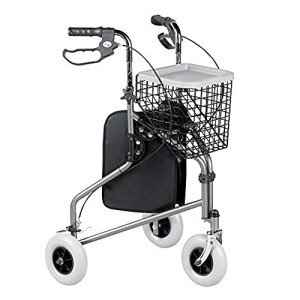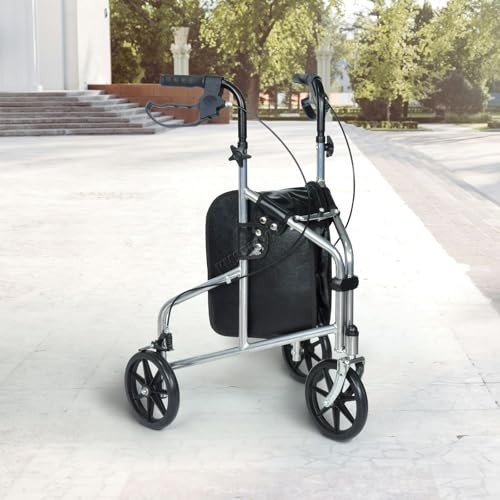How To Explain How To Use A Rollator To A Five-Year-Old
How To Use A Rollator: A Comprehensive Guide
Rollators are mobility aids created to boost the self-reliance and safety of people with mobility challenges. Unlike basic walkers, rollators are equipped with wheels, a seat, and often a storage pouch, allowing users to move with higher ease and comfort. This post offers an extensive guide on how to use a rollator efficiently and securely, making sure a smoother and more satisfying walking experience.
What is a Rollator?
A rollator is a wheeled walking aid. It generally has:
- Three or 4 wheels: Offering stability and maneuverability.
- Hand brakes: For control while walking or when resting.
- A seat: Allowing users to take breaks conveniently.
- Storage area: Such as a basket or pouch for individual products.
Kinds of Rollators
There are numerous kinds of rollators, designed to satisfy the needs of various users:
| Type | Description | Best for |
|---|---|---|
| 3-Wheel Rollator | Lighter and more compact, perfect for indoor use | Navigating tight spaces |
| 4-Wheel Rollator | Deals stability and a larger seat, appropriate for outdoor use | Longer walks and heavier use |
| Durable Rollator | Created to support more weight with additional robust functions | Users requiring extra assistance |
| Pediatric Rollator | Smaller in size, changed for children | Children with mobility constraints |
How to Use a Rollator
Using a rollator properly is crucial to guarantee safety and maximize the benefits it provides. Here's a detailed guide:
Step 1: Adjust the Height
Before utilizing the rollator, it is vital to adjust the handlebars to the right height.

- Stand straight: With your arms unwinded at your sides.
- Procedure the height: The hand grips ought to be at wrist level when the user is standing.
- Safe changes: Ensure all locking mechanisms are strongly engaged.
Step 2: Familiarize Yourself with the Rollator
Understanding the elements of the rollator will assist boost its usability.
- Brakes: Learn how to engage and release the brakes by squeezing the handles.
- Seat: Identify where to sit conveniently when you require to rest.
- Storage location: Know where you can keep individual valuables.
Action 3: Start Walking
- Position the rollator: Place it a step ahead of you, ensuring that the brakes are launched.
- Grip the deals with strongly: Keep a light tension in your arms while keeping the rollator.
- Step inside the frame: Move forward by stepping with one foot and then the other.
- Keep a straight posture: Walking ought to be upright, avoiding the temptation to lean on the rollator excessively.
Step 4: Utilize Brakes
Always use the brakes effectively to improve safety:
- To slow down: Gradually squeeze the brakes.
- To stop: Fully engage the brakes by pulling on both manages.
- To take a seat: Ensure the rollator is steady, then carefully lower yourself onto the seat.
Step 5: Maneuver with Care
Turning and navigating can be difficult, so here are important ideas:

- Telegraph your direction: Look where you want to precede turning.
- Take little steps: Move carefully when turning to preserve balance.
- Use a three-point turn: Turn from one side to the other, keeping the walker close.
Action 6: Practice Stopping and Resting
Taking breaks is essential. Here are ideas for resting:
- Find flat surface areas: Ensure the location is level when you sit.
- Engage the brakes when seated: This will avoid rolling.
- Shift position slowly: When prepared to stand again, eliminate the brakes before increasing.
Maintenance and Safety Tips
To guarantee the rollator remains practical and safe:
- Regularly check the brakes: Ensure they engage and launch properly.
- Examine wheel positioning: Wheels needs to not wobble; tighten any loose screws.
- Clean the rollator: Wipe down surfaces and remove particles from tires to keep smooth operation.
Typical Concerns
Users may deal with several typical concerns when utilizing rollators. Here are some basic FAQs:
FAQs
Q1: Can I use a rollator outdoors?A: Yes, the majority of
rollators are designed for both indoor and outdoor use. However, ensure it has the appropriate wheel size and tread for outdoor surfaces. Q2: What are the weight limits on rollators?A: Weight restricts
usually differ by design, but sturdy rollators can generally accommodate users weighing around 300 to 500 pounds. Q3: Are rollators adjustable?A: Yes, the majority of rollators come with adjustable deal with heights to accommodate users of different heights
. Q4: How do I transfer a rollator?A: Many rollators canbe folded for convenient transport in a vehicle. Always inspect the user handbook for specific folding instructions. Q5: Can I use a rollator while recovering from surgery?A: Yes, many people use rollators during healing to gain back strength and balance, but guarantee you follow your healthcare provider's suggestions.
Comprehending how to use a rollator properly can considerably enhance mobility and minimize the threat of falls. Whether you are brand-new to utilizing mobility aids or seeking to fine-tune your method, following the standards gone over in this article is crucial. With practice, a rollator can enhance self-reliance while making sure safety, therefore enabling users to take pleasure in a more active way of life.
- Straße, Hausnummer Newkirk Collapsible Rollator & Newkirk CO KG
- PLZ Ort, Land 6203 Neuenkirch, Schweiz
- Bundesland / Kanton Newkirk Solutions
- Land Peru
- Telefon Newkirk & Newkirk GbR
- Fax Newkirk Newkirk Services
- E-Mail 207 Compact Rollator & Newkirk AG
- Web 207 & Silke Ltd
- Umsatzsteuer-ID Newkirk & Silke Services


